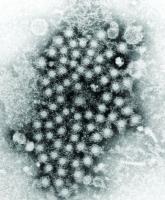News

AGA Clinical Practice Update: Direct-acting antivirals and hepatocellular carcinoma
For patients listed for liver transplantation, determine timing of DAA therapy on a case-by-case basis, consider regional wait times, availability...
Brennan McCullar is a Hospitalist at Baptist Medical Group in Memphis, Tennessee. Bradford Waters is a Hepatologist, John Phillips is a Radiologist, Alan Appelbaum is a Radiologist, David Archie is a Radiologist, and Alva Weir is an Oncologist, all at Memphis Veterans Affairs Medical Center in Tennessee. Vikki Nolan is an Assistant Professor of epidemiology and Alva Weir is the Director of the hematology-oncology fellowship program, both at University of Tennessee Health Science Center in Memphis.
Correspondence: Brennan McCullar (bpalazo@gmail.com)
Author disclosures
The authors report no actual or potential conflicts of interest with regard to this article.
Disclaimer
The opinions expressed herein are those of the authors and do not necessarily reflect those of Federal Practitioner, Frontline Medical Communications Inc., the US Government, or any of its agencies.
Patients at MVAMC with cirrhosis and patients with chronic hepatitis B are routinely screened with ultrasound, CT, or MRI in accordance with the AASLD, EASL, and VA guidelines. Of 303 patients with HCV and cirrhosis under care in 2015, 242 (81%) received imaging to screen for HCC according to the VA National Hepatitis C Registry 2015 (Personal Communication, Population Health Service, Office of Patient Care Services).The LI-RADS scoring system was not applied as a standard screening methodology.
Under an institutional review board-approved protocol, we reviewed the charts of all patients diagnosed with HCC at MVAMC from 2009 to 2014, utilizing ICD-9 code of 155.0 for HCC. We identified within these charts patients who had a surveillance CT image performed within a 6- to 13-month period prior to the CTs that diagnosed HCC (prediagnostic HCC CT). Furthermore, we reviewed the charts of all patients diagnosed with benign liver nodules at MVAMC from 2009 to 2014, utilizing the ICD-9 code of 573.8 for other specified disorders of the liver.
Within these charts, we found patients who had a surveillance CT image performed and who were followed after that image with additional imaging for ≥ 2 years or who had a liver biopsy negative for HCC (benign surveillance CT). We compared these 2 sets of CTs utilizing LI-RADS criteria. Once these patients were identified, a list of the CTs to be examined were given to 2 MVAMC radiologists who specialize in CT.
No identifying information of the patients was included, and a 13-digit number unique to each CT exam identified the CTs to be reviewed. Radiologist 1 and 2 examined the CTs on the MVAMC Picture Archiving and Communication System (PACS). Both radiologists were asked to give each nodule a score according to LI-RADS v2014 diagnostic algorithm (Figure).
We hypothesized that the prediagnostic CT images of patients eventually determined to have HCC would have a LI-RADS score of 4 (LR4) or LR5. Furthermore, we hypothesized that the CT images of the benign liver nodule patients would have a score ≤ LR3. If there was a disagreement between the radiologists in terms of a malignant score (LR4 or LR5) vs a benign score (≤ LR3), then a third radiologist (radiologist 3) provided a score for these nodules. The third, tiebreaker radiologist was given the scores of both prior radiologists and asked to choose which score was correct.
Statistical analysis was then applied to the data to determine the sensitivity, specificity, and diagnostic accuracy in diagnosing eventual HCC, as well as the false-negative and false-positive rates of radiologists 1 and 2. Raw data also were used to determine the agreement between raters by calculating the κ statistic with a 95% CI.
A total of 70 nodules were examined by radiologists 1 and 2 with 42 of the nodules in the prediagnostic HCC CTs and 28 of the nodules in the benign surveillance CTs.
Radiologists 1 and 2 found 27 and 29 patients, respectively, that had HCC that might have been predicted in an earlier scan if LI-RADS had been utilized, while5 patients for radiologist 1 and 7 patients for radiologist 2 were determined to have benign disease that would have been incorrectly identified as likely HCC with LR4 or LR5 (Table 1).
For patients listed for liver transplantation, determine timing of DAA therapy on a case-by-case basis, consider regional wait times, availability...

Mitochondrial damage and iron accumulation from HCV are linked to the development of hepatocellular carcinoma.
Although the VA has been successful in screening, treating, and curing many veterans infected with hepatitis C virus, reaching young injection...
